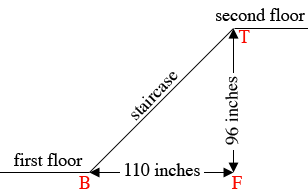| |||
| Math Central | Quandaries & Queries |
|
Question from Kenneth: Is it correct to think that a rate can have units that are the same? Usually rates have units that are different to each other. I saw this definition online: "A ratio is a comparison of two numbers. A ratio can be written using a colon, 3:5 , or as a fraction 35 ". For example, a ratio can be a comparison of boys and girls in a particular class. The boy to girl ratio is 3:5. "A rate, by contrast, is a comparison of two quantities which can have different units." The above definition indicates "... can have different units." Do I understand correctly that a rate can have the same units as in a sales tax rate and a rate of commission?
|
Hi Kenneth,
Quite often a rate is between two quantities having different units, for example we often measure the speed at which a car is travelling in miles per hour, or feet per second. A rate can describe the relationship between two quantities that have the same units as sales tax which you mentioned. In this case the rate, which is a fraction, is often reported as a percentage.
For a different example in my house there is a flight of stairs from the first to second floors.

How do you measure the steepness of the stairs? One way is to measure the angle $TBF$ in the diagram and I'll come back to that. Another way is to imagine you are walking up the stairs at a rate of one step per second. You altitude is changing and also your horizontal distance from the base of the stair $B$ is also changing. A measure of how your altitude is changing relative to how your horizontal distance is changing is $\large \frac{96}{110} = 0.873$ inches per inch. This is called the slope of the stairs and is often written as a percent which is 87.3%.
In the triangle $TBF$ the tangent of the angle $TBF$ is $\large \frac{96}{110} = 0.873$ and hence the measure of the angle $TBF$ is the inverse tangent of 0.873, $\tan^{-1}(0.873) = 41.1$ degrees.
I hope this helps,
Penny
 |
||
Math Central is supported by the University of Regina and The Pacific Institute for the Mathematical Sciences.